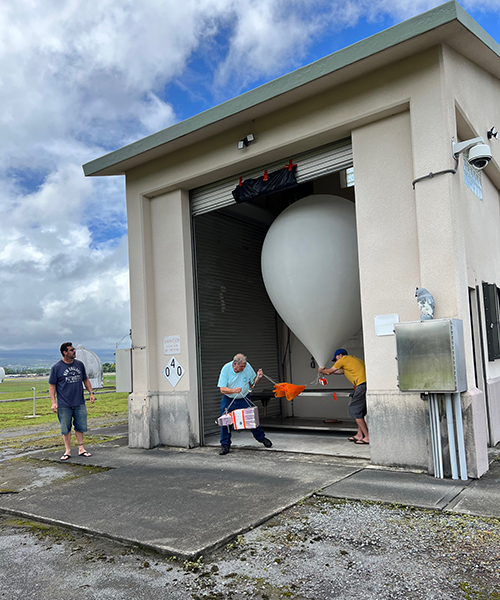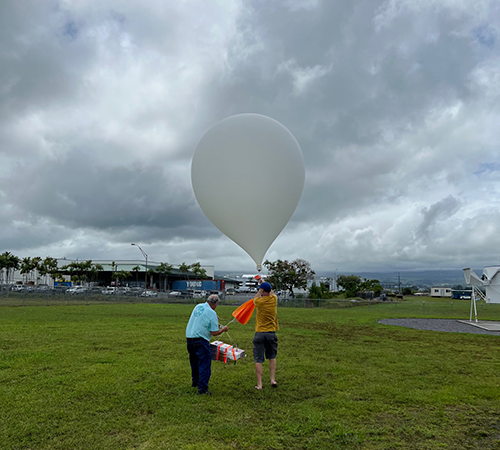2022 News & Events
New site for stratospheric aerosol observations established in Hilo, Hawai'i
1 June 2022


The latest site in CSL's growing network of stratospheric aerosol observations was established this past month in Hilo on the Big Island of Hawai'i. The new Hilo site joins Boulder, Colorado and Lauder, New Zealand as part of the Balloon Baseline Stratospheric Aerosol Profiles (B2SAP) project for routine balloon-sonde measurements of atmospheric aerosol number and size distribution from the ground surface to the middle stratosphere (~28 km altitude).
In May, CSL and CIRES researcher Elizabeth Asher traveled to Hilo to establish the new aerosol measurement capabilities, which complement the long-term balloon-borne measurements of stratospheric ozone and water vapor already performed there by NOAA's Global Monitoring Laboratory. The aerosols are measured with a miniaturized, lightweight Portable Optical Particle Spectrometer (POPS) capable of detecting atmospheric aerosols with diameters ranging from 140 nanometers to 2.5 microns (also commonly referred to as PM2.5).
The stratosphere, Earth's second layer of the atmosphere, plays a critically important role in global climate. The gases and aerosols that reside in the stratosphere can exert either cooling or warming effects depending on their chemical makeup and distribution. Stratospheric aerosols, in particular, have a direct impact on climate by changing Earth's energy balance through scattering or absorbing solar radiation. For example, large volcanic eruptions powerful enough to inject aerosols into the stratosphere (such at Mt. Pinatubo), have been shown to cause global cooling and influence ozone chemistry.
The stratosphere is inherently difficult to study directly, and large uncertainties still exist in our understanding of its chemistry and composition. The in situ measurements collectively provided by these balloon soundings at Boulder, Lauder, and now Hilo, provide a unique dataset that documents the background state of Earth's stratosphere and offers insight into variability in the stratospheric aerosol size distribution that is difficult to constrain from satellite observations.
CSL's balloon-borne aerosol measurements have already observed the effects of multiple stratospheric injection events, including from intense Siberian and Australian wildfires and moderate volcanic eruptions, that perturbed the amount of aerosols in the stratosphere.
The B2SAP project is planned to continue for at least four years, with new measurement sites being added at several more sites around the globe. The project is part of the NOAA Earth's Radiation Budget (ERB) research initiative.